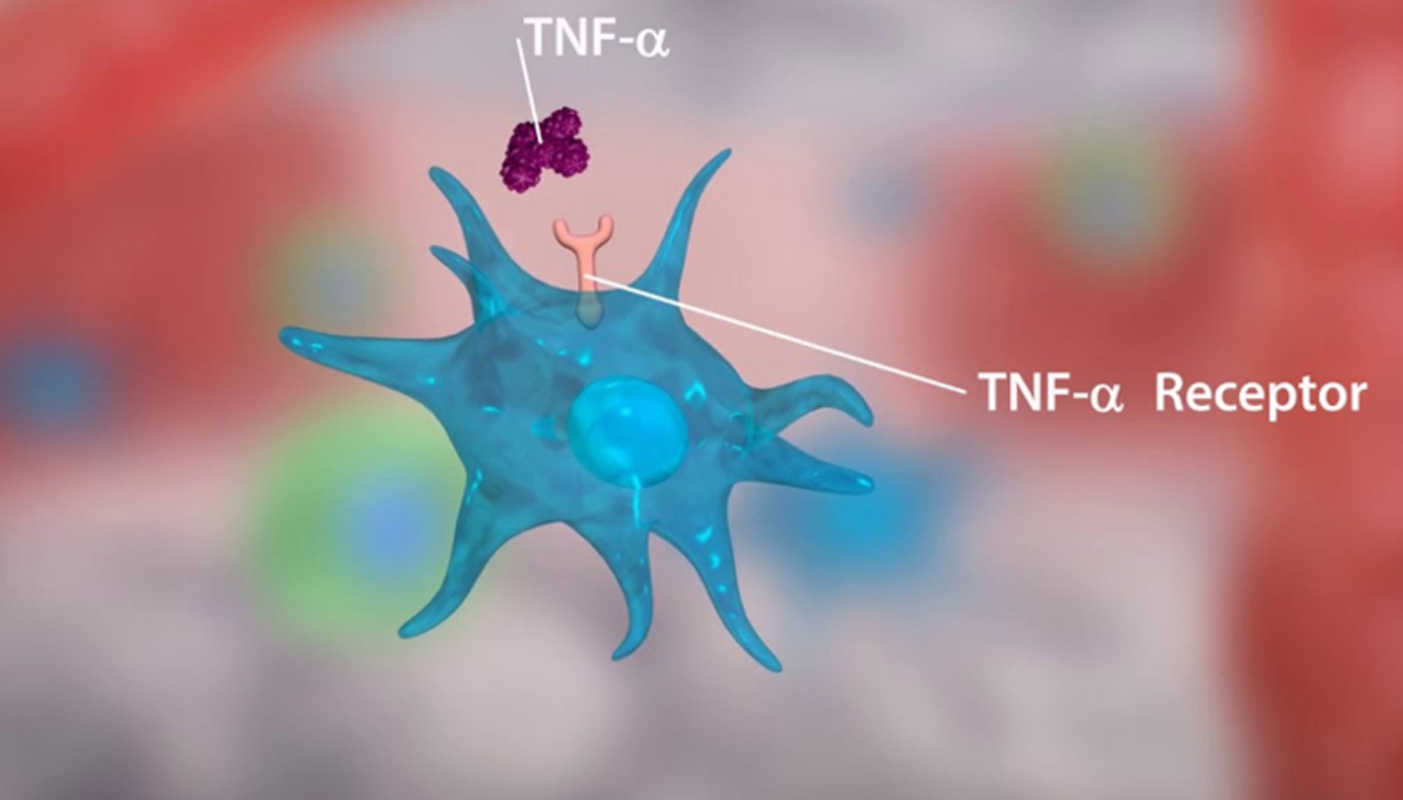

With regard to the pathophysiology of asthma, ADRB2 gene is essential. In addition to bronchodilation, it has been demonstrated that beta2-adrenergic receptor stimulation alters T- cell development and function, eosinophil survival, and effect of cytokine release from mast cells. Human B cells produce IgE when ADRB2 is stimulated, and they may also express the soluble low-affinity IgE receptor. Since the ADRB2 gene activity is favourably regulated by glucorticosteroids, the glucocorticosteroid activity is likewise linked to the ADRB2 gene.
Analysis of mutations in ADRB2 gene helps to develop a specific molecular diagnostics method which is considered as cost effective. Early diagnostic method formulation by designing a gene specific primer. Diagnostic assay helps to identify various genetic diseases by analysing it’s mutations. Providing care at the earliest possible stage which opens the door to future care and treatment and is therefore an important public health strategy in all settings. Personalized medicine, also referred to as precision medicine, it’s a form of medicine that uses information about a person’s own genes or proteins to prevent, diagnose, or treat disease also developed. As they are customised to each patients they increase its efficiency and avoid secondary diseases.
Wider ability of doctors to use patients’ genetic and other molecular information as part of routine medical care. Improved ability to predict which treatments will work best for specific patients. Better understanding of the underlying mechanisms by which various diseases occur. They can also be applied in pharmacokinetics, pharmacodynamics, pharmacogenomics , etc… by studying the effect of drugs in patients body. Complete genome data decoding has the ability to disclose unknown illnesses, potential therapeutic targets, and pharmacological adverse effects in addition to identifying the groups that will respond best to treatment.
Treatments utilising precision medicine are more acceptable as well as more probable to be carried out when they are specifically targeted at responders. In the end, this leads to better health outcomes and more efficient use of the limited healthcare resources. It is true that shifting the focus of treatment from reactive to targeted, precision medicine can help to reduce healthcare costs.
Targeted therapy has largely taken the place of the experimentation that characterises empirical medicine. Prescribers pick a drug and dose with little biologic expertise, monitor the treatment’s effects, and perform adjustments as needed. Modern customized healthcare research, which has focused on oncology, the field of neuroscience, cardiovascular illnesses, psychiatry, and inheritable conditions, is helping us learn more about the biological characteristics of our patients. We are more prepared to address complex medical challenges and diseases, tailor therapy options, and make an impact on the well-being and health of our patients and society as a whole when we combine our current understanding with new insights.
Customized healthcare promotes better lifestyles for local residents and provides vital information for the wellbeing of numerous people nearby and all over the globe. collaboration with other healthcare organisations on a variety of clinical trials aimed at promoting the growth of more personalised potential treatments for individuals with particular illnesses and disorders. Following the sequencing of the human genome, we now have a map of the features that people are most likely to inherit. We greatly increased our understanding of how a person’s unique genomic and molecular profiles can render them prone to certain diseases or ailments, whether the information had been medically accepted or not.
One of the members of the G protein-coupled receptor (GPCR) family, the 2-AR (ADRB2) selectively binds and is activated by a class of ligands known as catecholamines, including epinephrine in particular. It is widely expressed on bronchial smooth muscle cells. Since 2-AR activation can lead to the widening of the small airways, 2-AR agonists are utilised as the first-line bronchodilator medication in the treatment of asthma. An intronless gene on chromosome 5q31–32 that codes for the 2-AR, which can directly affect the impact of beta-2 adrenergic bronchodilator, is situated there. A 413 amino acids protein is encoded by the single exon of 2015 nucleotides that makes up ADRB2.They emphasise the genetic variations in ADRB2 as well as the crucial function of beta2-AR in the control of the pulmonary, cardiovascular, vascular, the endocrine and central neurological systems. Additionally, the ADRB2 transcript has a 5′ leader cistron (5′ LC) that contains a small open-read frame (ORF) that produces a 19-amino acid peptide that modulates mRNA translation and limits the expression of ADRB2 in cells. Asthma severity, response to medicines, and airway hypersensitivity are all linked to the more frequent mutations in the ADRB2 genes. Norepinephrine and epinephrine, two catecholamines in circulation, bind to adrenergic receptors and cause a variety of bodily reactions. The ADRB2 are principally in charge of increases in bronchodilation, cardiac function, and vasodilation in response to circulating catecholamines.
The ubiquitous ADRB2 G protein-coupled receptors mainly bind to endogenous adrenaline and have seven membranes. The stimulatory guanine nucleotide- binding protein (Gs) and the ADRB2 are typically coupled, activating adenylyl cyclase and increasing the quantity of intracellular cyclic adenosine monophosphate. (cAMP). This then triggers the activation of protein kinase A and the compensatory phosphatase PP2A, which phosphorylates a number of sarcolemmal proteins, including phospholamban and L-type Ca2+ channels. The smooth muscle relaxation brought on by protein kinase A’s subsequent phosphorylation of (and subsequent inactivation of) myosin light-chain kinase accounts to the vasodilatory effects of beta 2 stimulation. A system that assures specific and quick communication is provided by the assembly of the signalling complex.
A mutation from cysteine (Cys) to arginine (Arg) occurs in the 5′ LC at position 19, and this variation controls the production of the ADRB2 gene. Nevertheless, little is known about how this polymorphism might affect asthma. In addition, two missense variations have been discovered (rs1042713, c.G46A, p.Gly16Arg, and rs1042714, c.G79C, p.Gln27Glu), which change glycine (Gly) to arginine (Arg) at amino acid position 16 and glutamate (Gln) to glutamine (Glu) at amino acid position 27 respectively. These endogenous variants were expressed in cells in primary cultures and in vitro, demonstrating the various behaviours of the polymorphic receptors.
Comparatively to the Arg16 receptor, the Gly16 receptor may facilitate agonist-promoted reduced levels of receptor expression. In contrast to the Gln27 receptor, the Glu27 receptor exhibits a higher level of resistance to agonist-promoted downregulation. It has been shown that these polymorphisms alter the therapeutic effects of inhaled 2-adrenergic receptor agonists as well as the risk of developing asthma.Chronic respiratory inflammatory disease known as asthma is characterised by reversible airway obstruction, airway wall remodeling, and airway hyperresponsiveness. The pathophysiology of this complex condition is thought to include a significant genetic component. Numerous research have examined the relationship between genetic variations and asthma susceptibility thus far.
There are many genes that have been discovered as having an increased risk of developing asthma, but the -2 adrenergic receptor (ADRB2) has received the most attention. Asthma is one of the most prevalent chronic respiratory disorders globally. It is characterised by fluctuating airway obstruction brought on by bronchial low class-reactivity and airway inflammation. Between 0.2% in China to 21.0% in Australia, asthma prevalence varies significantly around the globe. With heritability estimates ranging between 48% and 79%, recent research have shown indicated asthma is an inheritable disease.
The discovery of milder asthma patients may have an impact on the rise in asthma prevalence.Since there is no known cure for asthma, managing the condition should focus on symptom relief, stopping the spread of the disease, and improving quality of life. There are two primary categories of asthma medication: controllers and relievers, in accordance with asthma management recommendations. The medicine found in rescue inhalers that acts as a bronchodilator and short-acting -2 adrenoceptor agonist (SABA) is known as a reliever.
On the other side, controller drugs include long-acting -2 adrenoceptor agonists, inhaled corticosteroids, and leukotriene modifiers. Considering the availability of numerous therapeutically effective treatments, the expense of several medications for asthma makes up a sizeable amount of asthma expenditures. Poor adherence and accompanying poor asthma management are regarded as serious global health issues. In spite of proper asthma management regimens, uncontrolled asthmatic patients need in-depth investigation rather than just increasing their prescription dosage. The genetic makeup should also be taken into account in the management of asthma, in addition to environmental and pharmacological factors, since it influences the course of the disease and how well patients respond to therapy-modifying agents and long-acting -2 adrenoceptor agonists.
Several asthma treatments are expensive, and although the readily accessible of many effective therapeutic drugs, poor adherence and consequently poor asthma control are seen as important global health issues. Detailed investigation is necessary rather than just increasing the dosage of drugs for uncontrolled asthmatic patients in spite of excellent asthma care programmes. The genetic makeup affects how the disease develops and how well patients respond to therapy-modifying agents and long-acting -2 adrenoceptor agonists, in addition to environmental and pharmacological factors.
Only children with asthma since the pathophysiology of the disease in adult patients frequently involves chronic conditions including chronic obstructive lung disease, occupational and industrial circumstances, and long-term cigarette smoking, and differs from that of children. Regardless of the patient’s genotype, these factors have the potential to seriously impair how well SABA responds to acute asthmatic attacks. They may lessen the effects of SABA-induced smooth-muscle relaxation, which makes it difficult to determine the precise impact of transmitter drugs on clinical response.
As the original reported findings (signal) were less significant than those published by later, larger studies, it is unlikely that source bias plays a part or might cause amplification of the actual impact of this finding. The first stage in the development of personalised medicine in the context of asthma is the identification of susceptibility genes that are implicated in asthma pathogenesis and treatment response. Numerous genetic variations in numerous genes have already been identified by genome-wide association research, candidate-gene linkage research, and positional cloning that have been linked to changed therapeutic effects of asthma drugs and, consequently, impact the degree of asthma control.
One of the genes most commonly associated with asthma susceptibility is ADRB2. Nine distinct polymorphisms have been found, and it is situated on chromosome 5q31-q32. Four of the discovered polymorphisms—Gly16Arg, Gln27Glu, Val34Met, and Thr164Ile—are non-synonymous variants that alter the amino acid sequence and may have a therapeutic impact on how asthmatic patients respond to B2A medication. Expression of the Arg allele at position. increased ADRB2’s downregulation, and thus the response to B2A is diminished in asthmatic patients, according to research.
Clinically significant medications for asthma as well as cardiovascular diseases, such as hypertension as well as congestive heart failure, target beta2-AR. (CHF). Salbuterol, salmeterol, and other beta- receptor agonists and antagonists like carvedilol and propranolol are among the most often prescribed drugs for treating cardiovascular disease and asthma, respectively. Although some beta-blockers, such as metoprolol and atenolol, are “selective” for the beta1-AR, at greater concentrations they also antagonise the beta2-AR. The activity of the resultant receptor, the expression of the ADRB2 gene, and the responsiveness to beta2-agonists are all impacted by a number of genetic variants that have been identified.
Currently, the common practise of using genetic profiles to guide treatment plans for this class of pharmaceuticals does not seem necessary, it is possible that a deeper comprehension of the pharmacogenetics of this family of medications could lead to tiered methods to treatment in the use of personalised medicines in the future for at least certain illnesses. It aids in the treatment of genetic abnormalities and the preservation of failing organs. However safety issues will still need to be evaluated with each new pharmacological profile, especially in light of the signals shown in early clinical investigations using full agonists administered at relatively high dosages, the advancement of more selective medicines with longer durations of action is likely to continue. Last but not least, there are potential to further alter the profile of 2 agonists to choose for biassed signalling; it needs to be seen whether or not medicines with relative preference for a certain signalling pathway will exhibit clinical advantages over the compounds already in use.
Here, a preliminary investigation is carried out to aid in the creation of a more focused therapy strategy and to test the pathophysiology of the ADRB2 gene. After assessing the ADRB2 gene mutations, primer designing and sequencing can present a highly accurate and cost-effective molecular diagnostics technology that aids in the early identification and treatment process.The molecular diagnostic places a strong emphasis on the early and precise detection of mutations, which has a significant impact on the development of personalised treatments.
Thus, selecting the proper chemotherapy agent and dosages for a patient can be aided by knowledge of and early detection of genetic aberrations in patients. Beta2-AR, a G-protein-coupled adrenergic receptor encoded by ADRB2, is a key player in the control of the cardiovascular, pulmonary, vascular, endocrine, and central neurological systems. The investigations have demonstrated the prevalence and characterization of polymorphisms of amino acid alterations at locations 16 (arginine to glycine; rs1042713) and 27 (glutamic acid to glutamine; rs1042714) in altered receptor functioning in asthma.
In order to evaluate the relationships between the ADRB2 pathogenic mutations and diseases (for example, asthma ), specific primers were created for unique amplification of the target region of the clinically important ADRB2 gene. in order to create a particular ADRB2 gene linked diagnostic technique. A molecular test can be created using amplicon-specific sequencing techniques. As a result, mutations in that specific region of the gene could be tested using customised primers, which aids in the prompt and precise identification of abnormalities so that they can be addressed as soon as feasible. Salbutamol is considered to be ineffective because gene variation affects how well some medications work to cure disorders.The finalization of the genomic map has led to an increase in the availability of precision pharmaceuticals on the international market. These customised medications enable a more efficient use of medical resources by focusing on the patients who are most likely to profit from the treatment. However, challenges abound, partly as a result of how pricey they are. Some targeted medications may contribute to the disease getting worse even when they come short of being therapeutic.
The prevalence of numerous genetic conditions, especially so-called single gene diseases, is typically influenced by a variety of genetic polymorphisms. Numerous variations frequently exist in even so-called one gene illnesses, which add to the illness’s complexity. The technique amplifies specific genomic sequences using a Polymerase Chain Reaction (PCR). The efficiency of a PCR experiment as a whole depends on the design of the synthetic nucleotide primers. If both sets of primers are flawlessly designed, the amplification response will be effective and specific, producing a sizable yield of the desired amplicon. Individualized medical treatments are expected to proliferate across the following ten years and change how services are delivered and evaluated.
The challenge and unpredictability of administering pharmaceuticals that depend on biomarker data, as well as the innovative, evolutionary character of AI-based technology, may be thought to be the first and second catalysts for these changes. The challenge and unpredictability of administering pharmaceuticals that depend on biomarker data, as well as the innovative, evolutionary character of AI-based technology, may be thought to be the first and second catalysts for these changes.
Biotechnologist, VETA Genomics








